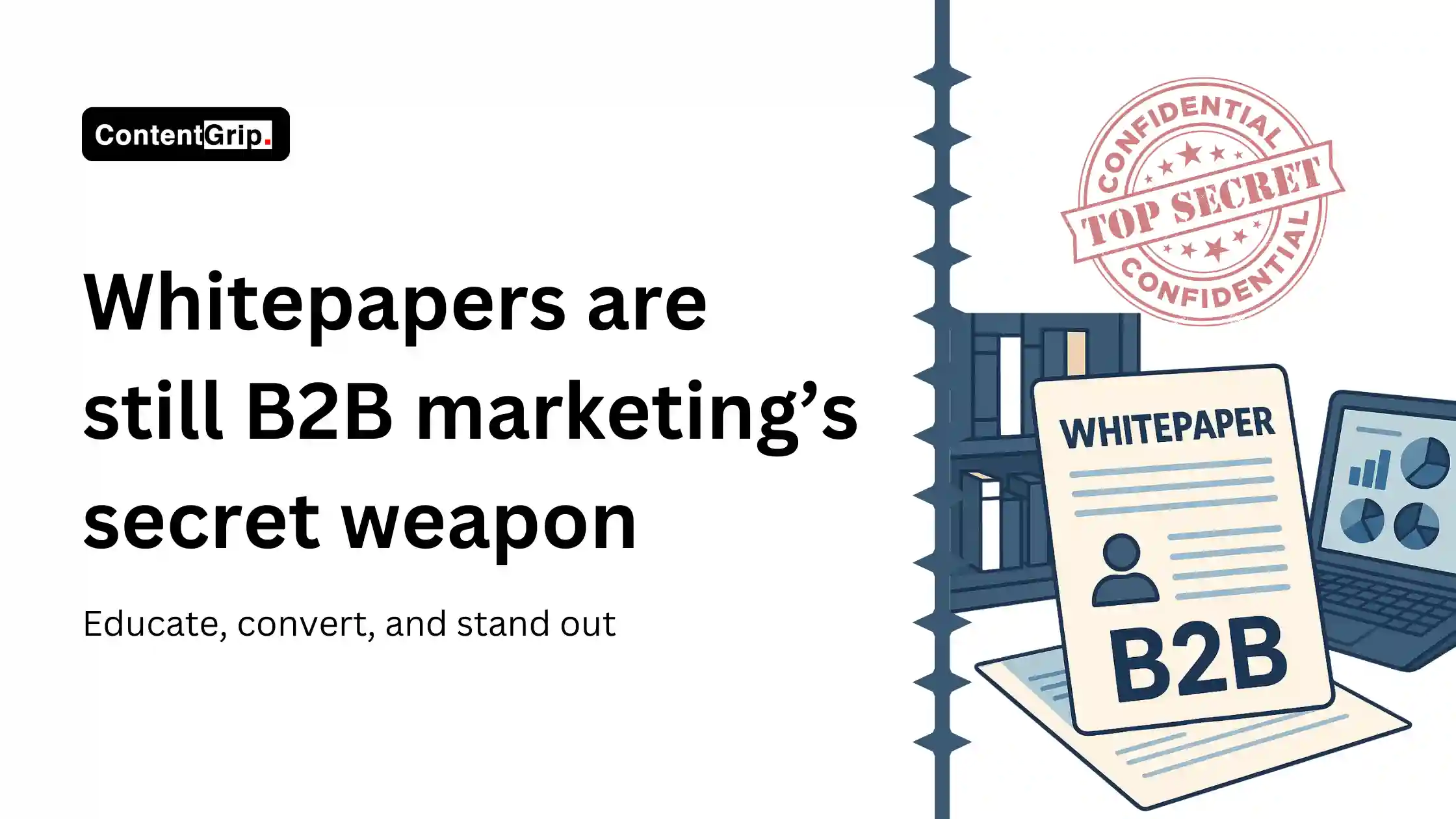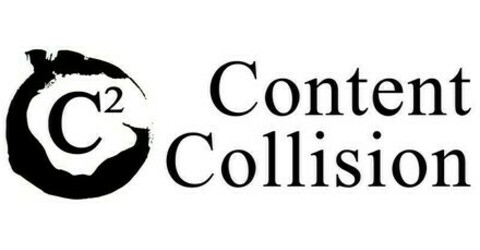Whitepapers are still B2B marketing's secret weapon
How whitepaper's long-form format continues to drive leads, trust, and thought leadership.

whitepapers remain one of the few content assets that can truly pull their weight. These documents aren't just info dumps—they're strategic tools for educating audiences, flexing industry expertise, and generating qualified leads.
This article explores how B2B marketers can leverage whitepapers not just as gated content, but as engines for thought leadership and conversion. We'll break down what makes whitepapers effective, why they still matter in a noisy content landscape, and how to structure them for maximum return.
Short on time?
Here’s a table of contents for quick access:
- What is a whitepaper in B2B marketing?
- Why whitepapers still educate better than most formats
- The thought leadership value marketers often miss
- Using whitepapers to fuel high-intent lead generation
- 12 reasons whitepapers outperform other B2B content
- The three types of whitepapers—and how to choose
- Final thoughts

What is a whitepaper in B2B marketing?
Whitepapers are long-form, data-driven documents designed to offer deep insight into a specific industry challenge, trend, or solution.
Unlike blog posts or brochures, whitepapers aim to inform—not sell. That’s exactly why they’re so effective.
For B2B marketers, whitepapers serve as trust-building assets. When done right, they show your target audience that you understand their pain points and have credible ideas for solving them.
From IT and finance to SaaS and manufacturing, whitepapers help establish intellectual authority in high-stakes, high-consideration buying cycles.
Why whitepapers still educate better than most formats
In complex industries where decisions involve multiple stakeholders and sizable investments, whitepapers meet the demand for serious content. Buyers want to be sure—and whitepapers give them reasons to be.
For example, a whitepaper detailing cybersecurity trends doesn’t just list the latest risks. It walks IT buyers through threat patterns, regulatory shifts, and actionable frameworks for internal risk mitigation. That level of depth builds confidence and positions the company as a helpful expert—not just a vendor.
Educational content like this not only answers your audience’s questions, it also encourages longer dwell times, repeated visits, and social sharing among peers who value substance over sales fluff.
The thought leadership value marketers often miss
Too often, marketers reserve their best insights for internal decks or paywalled research. Whitepapers offer a smarter route: share strategic thinking publicly and watch your authority grow.
Publishing original research, fresh perspectives, or detailed best practices helps elevate your brand as a category leader. While some teams might pay for research paper data to speed up the process, the key lies in how strategically you package that insight.
Whether it’s trend forecasting, regulatory breakdowns, or unique frameworks, whitepapers prove that your team knows more than just how to market—you know how to lead.
This approach has helped consulting giants like McKinsey maintain influence, and tech brands like HubSpot to educate entire categories. It works at every scale—so long as the ideas are sharp and the writing is tight.
Using whitepapers to fuel high-intent lead generation
One of the most powerful roles a whitepaper plays is as a lead magnet. In B2B, where nurturing cycles are long and complex, whitepapers offer the right blend of depth and value to earn a prospect’s contact information.
The gated content model is still alive for a reason: it works. Prospects are more likely to trade their email address for content that promises (and delivers) actionable insights. Once they’re in the funnel, that whitepaper also gives your sales team context to follow up intelligently.
Plus, since whitepapers often cover bottom-of-funnel topics—like cost justification or solution comparison—they attract leads who are closer to buying. That means better alignment between marketing and sales on lead quality.
12 reasons whitepapers outperform other B2B content
Whitepapers stand out because they:
- Go deep: Deliver nuanced content, not just soundbites.
- Build authority: Demonstrate subject matter expertise at scale.
- Drive lead volume: Work great as gated content.
- Enhance credibility: Signal that you take insights seriously.
- Educate prospects: Help audiences make smart buying decisions.
- Scale across channels: Fuel blogs, webinars, email campaigns.
- Support SEO: Optimize for long-tail keywords and relevance.
- Nurture leads: Serve as follow-up assets post-download.
- Encourage engagement: Include visuals, links, even interactive tools.
- Differentiate your brand: Show what you know, not just what you sell.
- Boost ROI: High-value content attracts high-intent prospects.
- Offer long shelf-life: Stay relevant long after publish date.
The three types of whitepapers and how to choose
- Problem-solution whitepapers
Ideal for showcasing how your product or service solves a pressing industry pain point. Use real-world examples and data-backed outcomes.
- Best practices guides
Great for educating your audience on how to improve processes, workflows, or compliance. These are less promotional, more instructional.
- Industry insight reports
Use these when you want to comment on trends, policy shifts, or market projections. Perfect for building top-of-funnel awareness and thought leadership.
Final thoughts: Still underrated and still unmatched
If your B2B content strategy doesn’t include whitepapers, you’re leaving influence (and leads) on the table. In a world full of content fluff, whitepapers still win by being smart, substantive, and strategically aligned with what your audience actually wants: credible guidance.
Want to take it up a notch? Pair your next whitepaper with a distribution plan that includes paid LinkedIn promotion, email nurture sequences, and repurposed snippets for SEO-rich blog posts.
And if bandwidth is tight, some marketers even turn to external support to help draft or structure research-heavy content. It’s not just about writing—it’s about activating what you’ve written.




